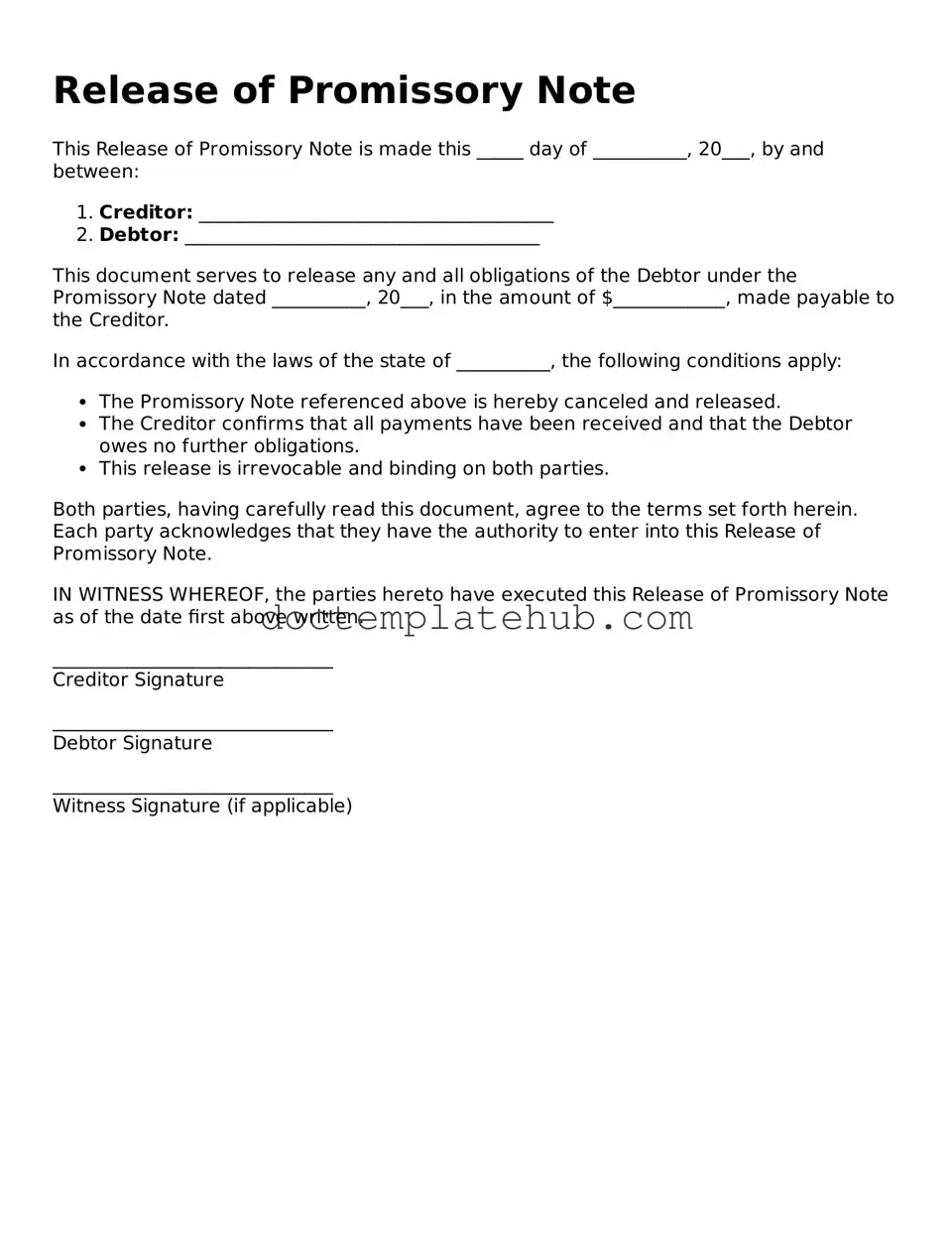What is a Release of Promissory Note form?
The Release of Promissory Note form is a legal document that signifies the cancellation of a promissory note. When a borrower repays a loan in full, the lender can issue this form to confirm that the debt has been settled and that the borrower is no longer obligated to make any payments. This form serves as proof that the lender has released their claim on the borrower's assets related to the loan.
Why is it important to have a Release of Promissory Note?
Having a Release of Promissory Note is crucial for both parties involved. For the borrower, it provides a clear record that the debt has been paid off, which can be important for credit reporting and future financial transactions. For the lender, it protects against any future claims regarding the loan, ensuring that they cannot be held liable for the debt once it has been satisfied.
How do I obtain a Release of Promissory Note form?
You can typically obtain a Release of Promissory Note form from various sources. Many legal websites offer templates that you can customize to your needs. Additionally, if you have a legal advisor, they can provide you with a tailored form that meets your specific requirements. Ensure that the form complies with your state’s regulations to avoid any issues later on.
What information is required to complete the form?
To complete the Release of Promissory Note form, you will need to include specific information such as the names of the borrower and lender, the date of the original promissory note, the amount of the loan, and the date the loan was paid in full. You may also need to provide details about the method of payment and any relevant loan account numbers. Accurate information helps prevent any misunderstandings or disputes in the future.
Is notarization required for the Release of Promissory Note?
While notarization is not always legally required, it is highly recommended. Having the Release of Promissory Note notarized adds an extra layer of authenticity and can help prevent disputes over the validity of the document. Some lenders may also require notarization as part of their internal policies, so it is wise to check with them before finalizing the document.
What happens if I do not obtain a Release of Promissory Note?
If you do not obtain a Release of Promissory Note after repaying a loan, you may face potential complications. The lender could mistakenly believe that the debt is still outstanding, which could affect your credit score and financial reputation. Additionally, without this document, you might find it challenging to prove that the debt has been settled, leading to potential legal disputes in the future.
Can I use a Release of Promissory Note for any type of loan?
Generally, a Release of Promissory Note can be used for various types of loans, including personal loans, business loans, and mortgages. However, specific requirements may vary depending on the nature of the loan and the lender's policies. It is advisable to consult with a legal professional to ensure that the form is appropriate for your particular situation.
